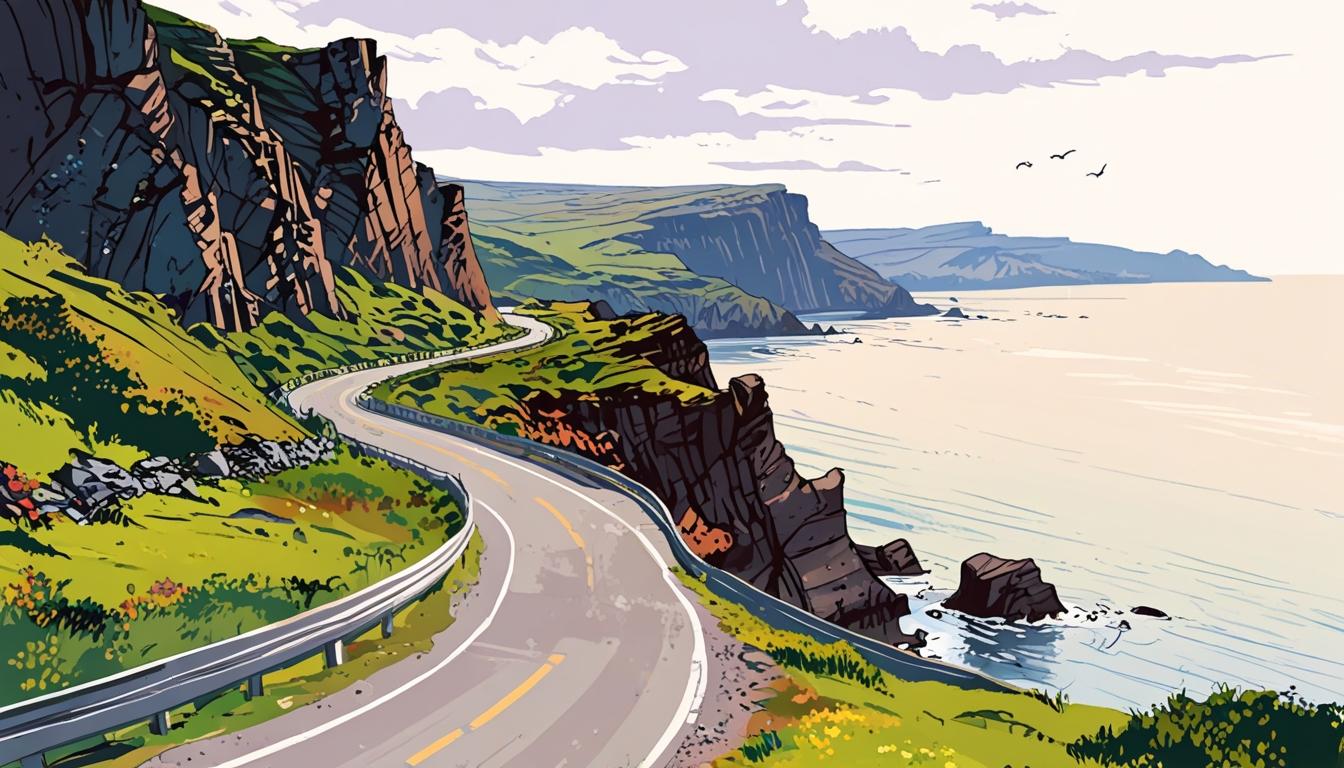A decade has passed since the North Coast 500 (NC500) was introduced as a scenic driving route in Scotland, transforming local tourism, but not without significant challenges. Stretching 516 miles from Inverness around the northern Scottish coastline, the NC500 takes in notable locations like John O’Groats and Durness. Initially promoted by VisitScotland, the route aimed to rival famous road trips such as Route 66. Mike Cantlay, the then chairman of VisitScotland, remarked back in 2015, “People travel from all over the world for Route 66, and with our scenery, there’s no reason why the North Coast 500 can’t prove to be just as popular.”
Initially, the NC500 was simply a concept without real infrastructure; it relied on a website and social media presence for promotion. Many of the picturesque roads had already been known among locals as the North and West Highlands Tourist Route, but the rebranding into a circular itinerary captured the imaginations of adventurous tourists. Enthusiastic coverage by various media outlets quickly followed the launch, including mentions in Die Welt and The New York Times, but this sudden popularity brought unforeseen consequences.
In the past few years, locals along the route have expressed frustrations regarding tourist behaviour and traffic congestion. A 2017 report suggested that businesses saw a 10-20% rise in visitors, but this surge in tourism has raised concerns, especially during the pandemic when domestic travel soared. Locals reported problems with littering, wild camping, and traffic jams, prompting two Facebook groups, “NC500 the dirty truth” and “NC500 the land weeps,” to document these issues. The Fodor’s Travel Guide has suggested avoiding the NC500 in 2025 due to these concerns about overtourism.
Robin Pettigrew, who resides in Lochcarron and advocates for the local community, highlighted the change in tourism patterns, stating, “Before the pandemic, we always had a reasonably sustainable tourism model, with people staying in B&Bs or holiday rentals for a week... Now with the NC500, it’s just a night and move." While he does not oppose tourism, he advocates for more sustainable practices.
To address these issues, the NC500 company has introduced a voluntary pledge for visitors to act responsibly, although participation remains low, with fewer than 3,000 individuals signing. In conversations with local business owners like Judith Fish of the Applecross Inn, the need for improved support and infrastructure was apparent. Fish noted, “My business is very busy... but for lots of other people round here it’s not like that,” alluding to challenges faced by local shops due to tourists favouring larger supermarket chains for supplies.
The local government, Highland Council, is contemplating a 5% tourism levy on accommodation to fund improvements in facilities and tourism management, with potential implementation by the end of 2026. However, scepticism remains among some residents who worry it may merely drive tourists to less regulated options, such as motorhomes.
On a recent journey along the NC500, Lafferty noted the breathtaking scenery and quieter travel during off-peak seasons. Conversations with locals like Fiona Mackay from Durness highlighted the nuanced impact of tourism; while businesses have benefited, locals feel conflicted about the changes. Mackay acknowledged that increased traffic is crucial for their economic vitality, stating, “We’ve been winners of it as a business, but losers as locals.”
Efforts to manage tourism have begun to take shape, with the introduction of signage and the development of access rangers to better steward the route. Additionally, initiatives by the North Highland Initiative aim to better involve communities in directing tourism efforts.
As relocation pressures mount, local business owners like Murray Lamont, of Mackays Hotel, remain optimistic. “The Scottish tourist board had been fighting for years to get people to the Highlands. The NC500 did it in a matter of months,” he stated.
In contrast, Guy Crawford of Highland Coast Hotels underscored the importance of adapting tourism strategies based on experiences from the NC500’s first decade. He emphasised the need for “slower tourism,” encouraging visitors to appreciate their surroundings leisurely while underscoring the importance of preserving the highlands’ natural beauty and community well-being.
As the NC500 moves forward, it stands at a crossroads of opportunity and responsibility, as tourism continues to shape the local landscape in both beneficial and challenging ways.
Source: Noah Wire Services
